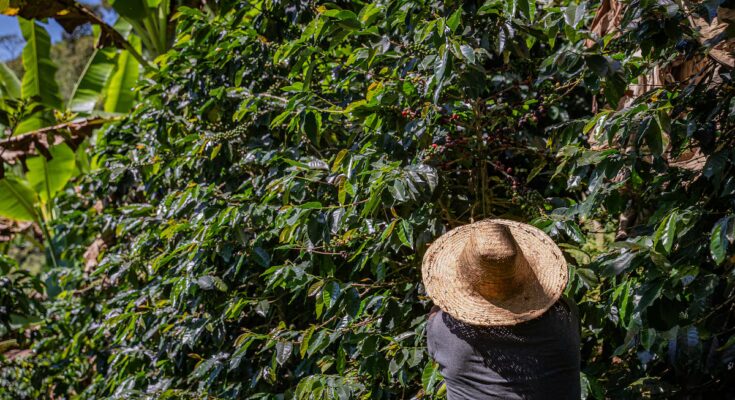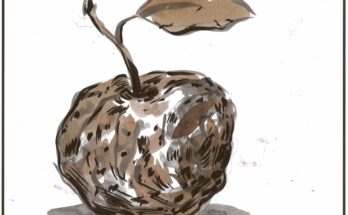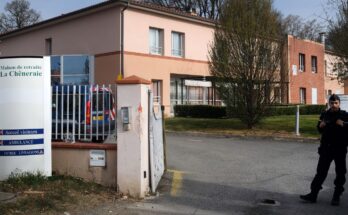Donald Trump shakes up Colombia’s export strategy with an unexpected shift in his trade policy. On November 14, the US president signed an executive order eliminating the blanket 10% tariff imposed in August on nearly all imports. The measure, which affected its main trading partners, is partially reversed: products that the United States does not produce in sufficient quantities to meet demand – coffee, fruit, meat, cocoa – are left tax-free, trying to alleviate the cost of food in that country. The change contradicts the protectionist narrative that marked his return to the White House and comes after domestic pressures, such as persistent inflation, declining consumer confidence and Republican defeats in state elections, such as in New York.
The rudder has shaken world trade and leaves Colombian agriculture at a partial advantage: the share of the tax-free export basket goes from 51% to 72%, according to the Colombian American Chamber (AmCham). Coffee, the national flagship of Colombia – which is the world’s third largest producer of the highest quality Arabica variety – was exempt from the 10% surcharge, both on green and roasted beans. The advantage seemed solid: Brazil, the world’s largest producer, paid a 40% tariff. But with a second move made this Thursday, Trump eliminated it, reopening competition on the US market, where Colombia represents 19% of consumption compared to a third concentrated in the South American powerhouse.
The opportunity is clear, but it is not guaranteed and “in times of uncertainty, the only sustainable advantage of Colombian coffee is quality,” Gustavo Gómez, president of Asoexport, the National Association of Colombian Coffee Exporters, explains to the newspaper. The tariffs had vehemently punished Brazil and the benefit was clear: between January and August of this year, sales of Colombian coffee in the United States grew by 14.7% compared to the same period in 2024, while those in Brazil fell by 20.7%, also due to the highest tariffs in the world (50%) imposed as a political rebuke after the trial of his far-right ally Jair Bolsonaro, convicted of planning a coup d’état. of State.
Today, with the reopening of competition, the window is narrow and requires precision. “We must be more productive, maintain excellent quality and strengthen traceability and transparency. These are the real competitive advantages,” underlines Gómez. For his part, Esteban Ordóñez, commercial director of the National Federation of Coffee Growers, declares that the strategy must be maintained on three fronts: trust, to strengthen the relationship with customers and the industry; quality, positioning the ‘Café de Colombia’ brand and expanding the presence of the coffee triangle on more shelves; and logistics, taking advantage of its proximity to the US coast and its ability to offer fresh coffee year-round.
The tariff relief applies to other agricultural products. Cocoa and vegetable fats have not been taxed, which opens up space to consolidate Colombian offerings in premium niches. Tropical fruits such as banana, pineapple, lemon, coconut and mango also make the list, and it is surprising that avocado hass also benefits from the situation.
Although today it represents just 5% of the US avocado market – compared to the 71% that Mexico dominates -, according to the Hass Avocado Board, the union’s goal is challenging: “We hope to achieve that at least 40% of the total exported volume goes to the United States,” emphasizes Katheryn Mejía, executive president of Corpohass. For her, the local advantage lies in quality and logistics: “The soil conditions and the Colombian climate allow us to produce all year round, which doesn’t happen in other countries,” she explains. The sector ended 2024 with production volume growth of 30% and expects to reach 182,000 tonnes this year, which, as of October, reached almost five-sixths of the target.
Negotiations in the pipeline
Flowers, which account for 13% of Colombia’s exports to the United States, did not receive the same consolation. They continue to pay a 10% tariff, which limits their competitiveness against rivals such as Ecuador, although they face a 21.8% tariff. That’s why the blow wasn’t as strong as feared. Between April and August, Colombian flower exports to the United States fell by only 1%. At the same time, the sales volume grew by 4%, which is explained because flower growers knew how to play with the rules.
According to the Bancolombia Economic Studies Center, the profitability of the floral department of American supermarkets has made it possible to absorb part of the costs and direct negotiation with these channels has been fundamental. Creativity helps: manufacturers have adapted the mix of decks or decks to contain the effect of the tariff. Thanks to this strategy, the average price of bouquets decreased by 8%, while roses increased by only 1% and other flowers by 2%. In short: More volume was sold with different combinations to maintain demand.
The General Union of Colombian Exporters sees room to expand the list of duty-free products. According to the National Association for Foreign Trade (Analdex), there is an additional attachment that includes goods that could remain at 0%, but only after negotiation. In the case of flowers there is no clarity on the progress of these dialogues, but their weight in the American economy could be a key topic. According to the Society of American Florists, spending on floral products in the United States has reached $71 billion in 2024, with the market directly employing 91,500 people.
The tariff relief also affects oil and gold, which represent more than half the value of exports to the United States. While both sectors are exempt from the surcharge, AmCham warns that opportunities to gain market share are limited. In hydrocarbons, because more than tariffs, “factors such as regulatory stability and exploration decisions” matter in the midst of the energy transition. As for gold, which is experiencing a frenetic phase in international markets, with a 54% increase this year, the challenge is to demonstrate legal origin and traceability in a traditionally opaque market.
For María Claudia Lacouture, president of AmCham Colombia, the elimination of duties “is a real opportunity to consolidate what we already export, diversify the offer and increase the level of added value”. Between April and August, when the entire basket faced the 10% surcharge, exports grew by 16% compared to the same period in 2024, “which shows that Colombia can compete even in adverse scenarios,” he points out. Now “we must double down on the strategy: seek new customers, strengthen long-term relationships and differentiate ourselves with technical standards, sustainability and reliable logistics. If the country acts precisely, this relief can translate into greater opportunities and well-being for Colombians.”



